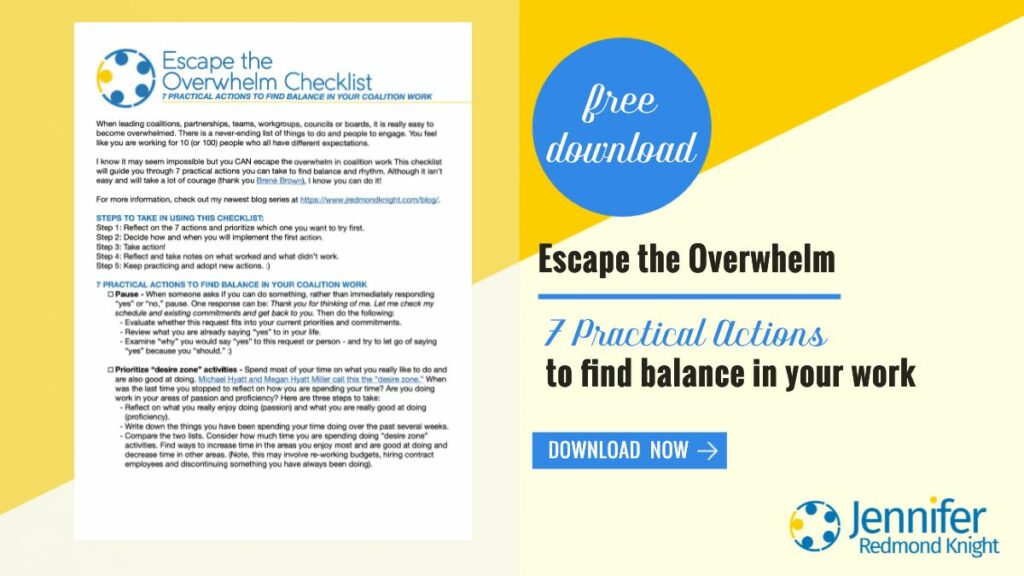One of the best things about coalition work is the ability to generate ideas and find collaborative solutions to complex problems. One of the most challenging aspects of coalition work is choosing where to focus and continuing to honor the need for more work in other areas. You want partners to share ideas and have thoughtful discussions but you also don’t want to feel like you have to solve every problem and create a new workgroup every time someone has a new idea. Join me this week as I provide four ideas on how to have a thoughtful discussion without feeling the need to create another project.
Re-prioritize.
If the thoughtful discussion is so impactful that the group decides that the current work you are doing is not as important as this new project, then you can offer the opportunity to re-prioritize. You only create a new project if you stop working on the current project. Ask your coalition (whoever the decision makers are) which project is no longer as important as this new project. You take one away in order to add a new one. For some situations, this may not be feasible (e.g. you have funding dedicated to a specific project); however, if you have flexibility, you can offer a re-prioritizing option.
Recruit leadership.
Some of the best work in a coalition happens when the work of the coalition also aligns with the work of individual organizations. If this new idea aligns with a particular organization’s current work, you can ask if someone from that organization would like to lead the effort for this project. If there is interest in terms of leadership, you can also ask if anyone from the group would like to join that leader in working on the project. Provide the leader’s contact information and direct those interested to that person.
Add to the Strategic Plan.
If this idea or project is not yet included in your coalition’s strategic plan, you can offer to add it to the plan (as long as you can make changes mid-cycle). This will provide a place for the potential project and can be shared with others who may decide to take leadership for this project in the future.
Create a shared “idea” document.
Develop a document that can be shared with the coalition or corresponding workgroup where this project idea (and others) can be added as they arise during meetings. You can revisit that document on a regular basis and when you decide to implement a new project or plan, you can use that document to guide the conversation on priority-setting. You can also share this document as part of your regular communication to your coalition or workgroup to recognize important conversations and potential projects.
When leading coalitions, partnerships or teams, you are often trying to escape the overwhelm! If you haven’t downloaded my free worksheet to support you in your personal and professional work, check it out here!

Photo by Brands&People on Unsplash
